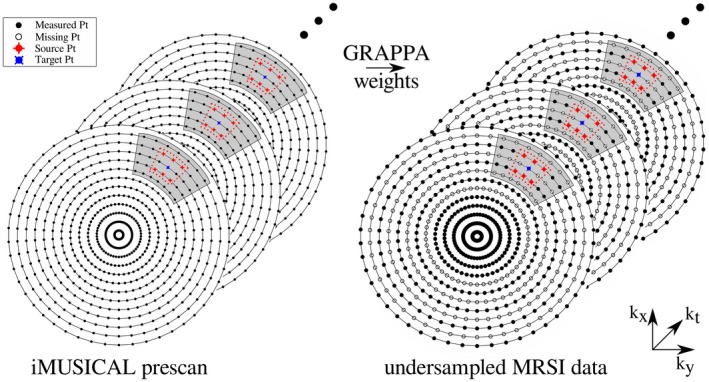Figure 2.

A schematic of the tt/tk‐GRAPPA method applied to concentric‐ring MRSI. The figure shows a fully sampled iMUSICAL calibration dataset on the left and a 2‐fold variable‐density undersampled MRSI k‐space on the right: the center of the k‐space is fully sampled (solid points), followed by constant 2‐fold undersampling (empty points). For calibration, a segment (shaded area) was used around each target point for the through‐k‐space GRAPPA part with a kernel size of 3 × 2 (red dotted lines), i.e., six source points. The kernel was slid through the segment of the calibration data to gather all the through‐k‐space kernel repetitions. Twenty‐one (21) calibration time points (through‐time kernel repetitions) were used. After calculating the tt/tk‐GRAPPA weights using the calibration data, the weights are used to reconstruct missing k‐space points in the undersampled MRSI data (right) MRSI, MR‐spectroscopic imaging; tt/tk‐GRAPPA, through‐time/through‐k‐space‐generalized autocalibrating partially parallel acquisition
